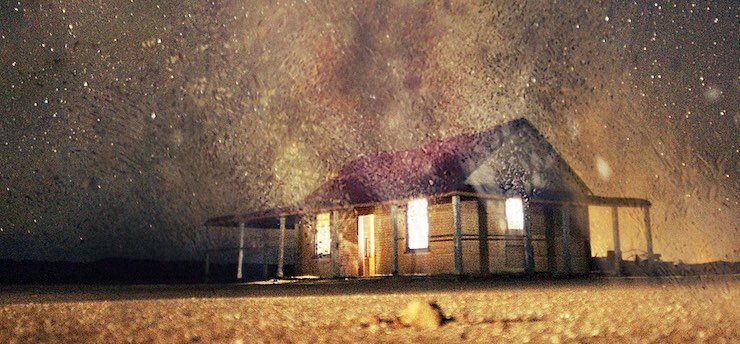While most people fear the end of the world (or at least actively avoid the idea entirely), there are occasionally those who welcome it, perhaps encouraging it to come about through the calling of Cthulhu or the releasing of Giant Squids. These fictional cultists and their charismatic leaders range from the power-mad to the grief-stricken; they can be presented as pro- or antagonists, or somewhere in between, but they are always fascinating.
We’ve rounded up eight tales of such doomsday cults to stock up on before the end of days…
Agents of Dreamland by Caitlín R. Kiernan
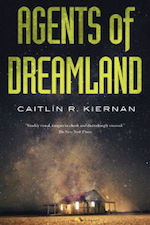 Agents of Dreamland mashes up the most terrifying images of Charles Manson with the Elder Gods. As you might imagine, no one in this book has a fun time. The Agent known only as The Signalman travels into the blinding heat of the desert near Salton Sea to investigate a cult compound. Once he finds “The Children of the Next Level” he discovers that the people there have given their lives, and most of their sanity, to a charismatic prophet of Cthulhu.
Agents of Dreamland mashes up the most terrifying images of Charles Manson with the Elder Gods. As you might imagine, no one in this book has a fun time. The Agent known only as The Signalman travels into the blinding heat of the desert near Salton Sea to investigate a cult compound. Once he finds “The Children of the Next Level” he discovers that the people there have given their lives, and most of their sanity, to a charismatic prophet of Cthulhu.
The problem is…the prophet might be right? And if he is, how can The Signalman possibly stop what the cult has unleashed?
La-Bas by J.K. Huysmans
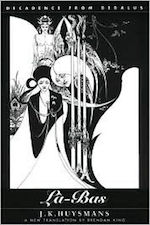 The novelist Durtal (a very thin fictionalization of author J.K. Huysmans) decides to dive into the super fun world of medieval cult history. He specifically researches the (real-life) murderer Gilles de Rais, which leads in turn to Durtal making the acquaintance of some lively modern Satanists. With the help of his lover, Madame Chantelouve (!!!) he embarks on an investigation of the occult that lurks just beneath fin de siècle Paris.
The novelist Durtal (a very thin fictionalization of author J.K. Huysmans) decides to dive into the super fun world of medieval cult history. He specifically researches the (real-life) murderer Gilles de Rais, which leads in turn to Durtal making the acquaintance of some lively modern Satanists. With the help of his lover, Madame Chantelouve (!!!) he embarks on an investigation of the occult that lurks just beneath fin de siècle Paris.
Geek Love by Katherine Dunn
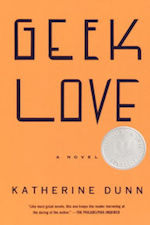 One of the creepiest plot points in Katherine Dunn’s Geek Love is Arturism, a cult founded by Arturo Binewski, the eldest son of a circus freak power couple who have raised their children in the family business. Arty, who has flippers and is billed as “Aqua Boy” in the family show, is alternately power-mad and resentful because of his status as a freak. Hence the cult activity, in which he leads his devotees in the pursuit of “Peace, Isolation, Purity”—PIP—involving the gradual voluntary amputation of limbs. His siblings aren’t as thrilled with this, and a power struggle over the family’s future ensues.
One of the creepiest plot points in Katherine Dunn’s Geek Love is Arturism, a cult founded by Arturo Binewski, the eldest son of a circus freak power couple who have raised their children in the family business. Arty, who has flippers and is billed as “Aqua Boy” in the family show, is alternately power-mad and resentful because of his status as a freak. Hence the cult activity, in which he leads his devotees in the pursuit of “Peace, Isolation, Purity”—PIP—involving the gradual voluntary amputation of limbs. His siblings aren’t as thrilled with this, and a power struggle over the family’s future ensues.
The Warren by Brian Evenson
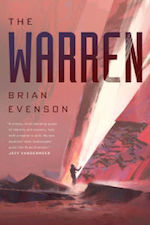 The Warren turns the idea of doomsday cult inside out. We meet a person known only as X, who might be human or might not, who is the last inhabitant of an enormous underground bunker. As far as X knows, he is the last person alive—the bunker is the last gasp of a civilization that fled underground to escape annihilation, and the surface is dead and bereft of hope.
The Warren turns the idea of doomsday cult inside out. We meet a person known only as X, who might be human or might not, who is the last inhabitant of an enormous underground bunker. As far as X knows, he is the last person alive—the bunker is the last gasp of a civilization that fled underground to escape annihilation, and the surface is dead and bereft of hope.
But when he gets a message from the central computer that another person exists, living above ground for seventy-one years, X decides to venture out of the safety of the Warren and see what remains.
The Leftovers by Tom Perrotta
 Tom Perrotta’s The Leftovers is set several years after billions of people are seemingly Raptured from the Earth, as the people left behind struggle to cope in a new world. The book focuses on the aftermath in the small town of Mapleton, New York, where groups of teens engage in regular orgiastic parties, the town’s mayor has had a nervous breakdown, and a prominent pastor has left his old calling for tabloid journalism. The most extreme reaction comes from The Guilty Remnant, a cult dedicated to reminding people of their fallen status. To that end their members are mute, wear white at all times in order to stand out, smoke in public, and occasionally confront their fellow Leftovers to remind them that their continued life on Earth is unnatural. The book follows one member, Laurie Garvey, as she leaves her family, rises through the ranks of the GR, and learns increasingly unsettling things about the group and its intentions.
Tom Perrotta’s The Leftovers is set several years after billions of people are seemingly Raptured from the Earth, as the people left behind struggle to cope in a new world. The book focuses on the aftermath in the small town of Mapleton, New York, where groups of teens engage in regular orgiastic parties, the town’s mayor has had a nervous breakdown, and a prominent pastor has left his old calling for tabloid journalism. The most extreme reaction comes from The Guilty Remnant, a cult dedicated to reminding people of their fallen status. To that end their members are mute, wear white at all times in order to stand out, smoke in public, and occasionally confront their fellow Leftovers to remind them that their continued life on Earth is unnatural. The book follows one member, Laurie Garvey, as she leaves her family, rises through the ranks of the GR, and learns increasingly unsettling things about the group and its intentions.
The Names by Don DeLillo
 The cult in Don DeLillo’s The Names is obsessed with the magical aura of language. They move seemingly randomly across the Middle East and India, inspiring rumors and evading capture—their only calling card is the murder of a single person in each city they visit, the victims chosen seemingly because their initials match the name of the city.
The cult in Don DeLillo’s The Names is obsessed with the magical aura of language. They move seemingly randomly across the Middle East and India, inspiring rumors and evading capture—their only calling card is the murder of a single person in each city they visit, the victims chosen seemingly because their initials match the name of the city.
The big question at the center of the novel, is: why? Are they worshiping a god? Trying to make sense out of a chaotic universe? Or simply reminding everyone that the universe is chaos?
Kraken by China Miéville
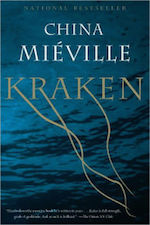 Squid Cult!!! When a forty-foot giant squid disappears from London’s Natural History Museum, it isn’t just a bizarre prank. Was it the work of The Tattoo, a gangster who is also a living, sentient tattoo hitching a ride on a human back? Was it Wati, an ancient Egyptian spirit who is fighting to unionize magical familiars? Was it London’s legendary wizard Grisamentum (who can’t really be counted out despite being dead), or most terrifying of all… did The Church of the Kraken Almighty decide to set their god free? And if so, will the Giant Squid awaken and begin the End of All Things with a flick of his holy tentacle?
Squid Cult!!! When a forty-foot giant squid disappears from London’s Natural History Museum, it isn’t just a bizarre prank. Was it the work of The Tattoo, a gangster who is also a living, sentient tattoo hitching a ride on a human back? Was it Wati, an ancient Egyptian spirit who is fighting to unionize magical familiars? Was it London’s legendary wizard Grisamentum (who can’t really be counted out despite being dead), or most terrifying of all… did The Church of the Kraken Almighty decide to set their god free? And if so, will the Giant Squid awaken and begin the End of All Things with a flick of his holy tentacle?
Universal Harvester by John Darnielle
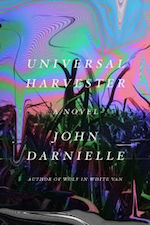 There are two cults in John Darnielle’s Universal Harvester. This first, most obvious one is a fringe Christian group whose ascetic teachings and demands for devotion tear a family apart. Darnielle sketches the details of this group in perfectly, we the reader just gets a sense of who they are and why they’d be so appealing. The other, more nebulous cult is centered around a series of eerie videotapes that show grainy images of abuse. The videos prove an irresistible force to a wide-ranging group of people who are suffering from grief.
There are two cults in John Darnielle’s Universal Harvester. This first, most obvious one is a fringe Christian group whose ascetic teachings and demands for devotion tear a family apart. Darnielle sketches the details of this group in perfectly, we the reader just gets a sense of who they are and why they’d be so appealing. The other, more nebulous cult is centered around a series of eerie videotapes that show grainy images of abuse. The videos prove an irresistible force to a wide-ranging group of people who are suffering from grief.
The book, while not in any way a traditional “horror”, is absolutely chilling.










